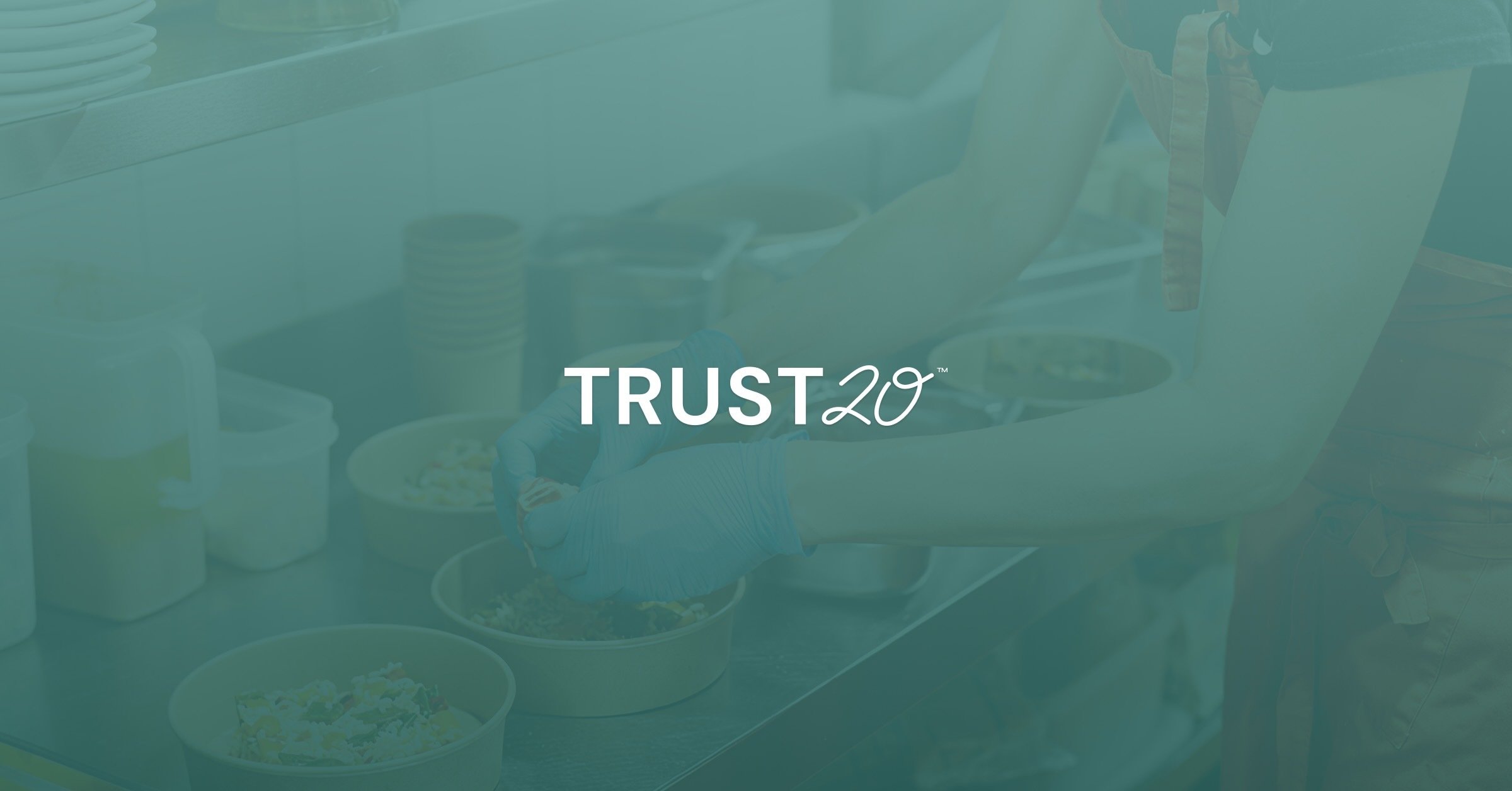If you're a foodservice professional, then you're no stranger to the challenges of handling raw meat safely.
Whether working in a busy restaurant or catering a large event, properly handling raw meat ensures food safety and prevents foodborne illnesses.
Recent research has shown the devastating consequences of not paying close enough attention to how meat is handled. And it goes beyond GI bugs: In 2025, an overwhelming body of research demonstrated a link between urinary tract infections (UTIs) and contaminated meat, especially with resistant E.coli.1
With these fresh concerns, we're increasingly aware of the importance of strict food safety practices to prevent cross-contamination and the spread of harmful bacteria.
In this post, we'll provide tips and tricks for safely handling raw meat so you can keep your customers (and yourself!) healthy and happy while enjoying their next meat-based meal.
Here's what we'll cover:
What is the safest way to handle raw meat?
What should you do after handling raw meats to ensure you do not cross contaminate?
How dangerous is raw meat?
Although many types of foods can transmit foodborne illnesses, without a doubt, raw meat is one of the most dangerous.
Raw meat can contain harmful bacteria such as salmonella, E. coli, and listeria. These bacteria can cause different types of foodborne illnesses, leading to symptoms such as nausea, vomiting, diarrhea, and even death in severe cases.
One of the most significant risks associated with consuming raw meat is its potential to contain harmful bacteria. These dangerous pathogens can be found in the meat itself or the animal's feces.
Cross-contamination is also a significant risk factor when working with raw meat. If meat carries harmful bacteria and comes in contact with other foods or surfaces, those foods or surfaces can also become contaminated.
These risks are why following food safety best practices is important, including separating raw meat from other foods and washing hands before and after handling raw meat.
It's important to note that some meats are more prone to contamination (or different types of contamination) than others. For example, raw beef can be contaminated with E. coli, while raw poultry is more likely to be contaminated with salmonella. Seafood can also be a source of foodborne illness due to harmful bacteria and toxins.
What is the safest way to handle raw meat?
While risks are associated with consuming and preparing raw meat, it doesn't necessarily mean you have to avoid it altogether. You can keep everyone safe by following the food safety best practices below!
1. Keep it separate from produce or ready-to-eat foods
Cross-contamination is a common problem in the kitchen, especially when handling raw meat. The best way to prevent cross-contamination is to separate raw meat from other food items, especially ready-to-eat foods and produce.2
You can accomplish this by using separate cutting boards, utensils, and containers for meat. Always wash your hands and surfaces thoroughly with hot, soapy water before and after handling raw meat.
2. Put the meat in leak-proof packaging
Leaking raw meat can spread bacteria quickly, leading to food poisoning. Always store raw meat in leak-proof packaging, such as a sealed container or plastic wrap. These storage methods help contain juices that may leak during transportation or storage.
If you're transporting raw meat, it should be packed in an insulated cooler with plenty of ice or frozen gel packs to keep it at a safe temperature.
3. Make sure frozen meat is received frozen and refrigerated meat stays below 41°F
Temperature control is key to preventing the growth of harmful bacteria in raw meat. When receiving an order, check that the meat in your delivery is completely frozen, while you should always store refrigerated meat below 41°F.
Make sure someone regularly checks refrigeration temperatures and records them to avoid the risk of bacterial growth.
4. Organize food storage by cooking temperature
Organizing your food storage by cooking temperature can also help prevent cross-contamination.
Store those meats that require more cooking at the bottom of your refrigerator or storage area and those that need less cooking at the top. This simple trick can help prevent dripping or contamination from meats requiring more cooking.
Also, if you are defrosting meat, poultry, or fish, be sure to place it below all other items in the fridge to avoid any juices dripping onto other foods, creating cross-contamination.
5. Watch out for ice crystals in packaging
Inspect the meat's packaging for ice crystals. They can be a sign that the meat has thawed and refrozen, creating a breeding ground for harmful bacteria and contaminants. Always purchase fresh meat and avoid any packaging with ice crystals.
6. Be wary of sticky, slimy, or indented meat
Another way to determine the freshness of raw meat is to examine its texture and appearance. If the meat feels sticky or slimy, it may be a sign of bacterial growth.3 Indented or discolored meat can also indicate spoilage and any strange odors should be a red flag to discard the meat immediately.
7. Maintain a meat-receiving temperature log
Members of your team who work in the kitchen need access to a meat-receiving temperature log. This log will help ensure the meat is received at the right temperature upon delivery.
You or your teammates need to take note of the temperature upon delivery and monitor it to ensure it stays within safe limits. Accurate, updated records will ensure that everyone who works in the kitchen knows the state of the raw meat in the fridge, cooler, or freezer.
8. Never leave raw meat out for more than two hours
Raw meat that sits at room temperature for too long becomes a haven for bacteria to grow.
That is why it is essential to never leave raw meat out for more than two hours. This time frame is even shorter if you're in a hot, humid climate.
9. Freeze raw meat immediately if not used within two days
Raw meat is highly perishable, and you must freeze it immediately if you're not planning to use it within two days.4 Freezing the meat will keep it safe from harmful bacteria and help retain its nutrients. Always make sure to store the meat in an airtight container before freezing.
10. Use two separate cutting boards
Use two different cutting boards–one for produce and the other for meat. By doing this, you're preventing cross-contamination between the meat and the vegetables.
The best practice is to use a color-coding system. For instance, you could use a red board for meat and a green board for vegetables.
11. Use paper towels to clean kitchen surfaces
As you likely already know, cleaning kitchen surfaces well is critical after handling raw meat. However, you should avoid using cloth towels when cleaning up from meat prep, as they can harbor harmful bacteria.
The best option is to use paper towels or disinfectant wipes to clean kitchen surfaces after handling raw meat. If you absolutely must use a cloth towel, make sure to launder it in hot water to kill all the bacteria.
12. Don't reuse marinades on raw meat without boiling them first
Marinades are a great way to add flavor to meat but try only to re-use them sparingly. If you must, boil them first.
Once the marinade is in contact with the raw meat, it's no longer safe for other foods. To reuse it, you must first bring it to a rolling boil to kill all the bacteria.5
Should I wash raw meat?
As you read the list of safety tips for handling raw meat above, you might have wondered if we were missing something: "Aren't you supposed to wash raw meat to help remove bacteria and other pathogens?"
No–not anymore. This food safety myth comes from an honest place in history, though!
In the past, when most people slaughtered and packaged their own meat, it was a common practice to wash meat. This practice removed traces of fat, blood, slime, or dirt from the meat.2
Today, meat and poultry are thoroughly cleaned during processing. That means rewashing it may spread bacteria to other foods, utensils, and surfaces in your kitchen. This cross-contamination can make you ill, causing foodborne illnesses. The juice simply isn't worth the squeeze, as they say!
Some argue that soaking the meat in containers full of water and salt, vinegar, or lemon juice can help “clean” their meat. If you're tempted to try this method, be aware that it's not recommended, either. Soaking meat does not remove bacteria and won’t make it any safer.
Saltwater is okay, but it doesn't do anything for food safety–it merely acts as a brine. If you decide to use it, drain and throw out the liquids and sanitize everything thoroughly to prevent cross-contamination.
Finally, know that using soap or detergent on meat or poultry is not safe, either. It can contaminate your food and make it unsafe to eat. There’s a risk that residual soap or detergent could remain on the meat, which can cause health issues if someone consumes that meat later.
What should you do after handling raw meats to avoid cross-contamination?
One of the best ways to avoid cross-contamination is to ensure you cook your meat to the correct temperature. Raw meat often contains harmful bacteria, such as E.coli, Salmonella, and Listeria, which you can only eliminate by cooking meat at a specific temperature for a set time.
Therefore, using a meat thermometer to check the temperature of your meat ensures it's cooked correctly, so you don't have to worry about contamination.
And remember to wash up! Your hands are a breeding ground for bacteria, and they're likely to be contaminated after handling raw meat. Washing your hands frequently, especially before and after handling meat, is essential in keeping you and your customers safe. Use warm, soapy water for at least 20 seconds and dry your hands with a clean towel.
To make sure everybody on your team is on the same page when safely handling raw meat, consider Trust20's products. Our Food Handler Certificate Training will teach you everything you need to know about how food becomes unsafe, how to receive and store food, the principles of cross-contamination, and much more.
Remember, food safety is everyone's responsibility, and it's up to all of us to do our part in preventing foodborne illnesses.
FAQ
What are the rules for handling raw meat?
Always keep raw meats separate from other food, refrigerate promptly, and use clean, dedicated tools and surfaces. Wash your hands thoroughly and cook meat to safe internal temperatures.
What is the 2-2-4 rule for food safety?
Refrigerate or freeze leftovers within 2 hours, use within 2 days if kept in the fridge, and store in containers no deeper than 4 inches.
What is the most important personal hygiene rule when handling raw meat?
Wash your hands with warm, soapy water before and after handling meat, and keep fingernails short and clean.
What is the safest way to handle raw meat?
Store at the right temperature, avoid crowding, use separate tools, and cook to the USDA-recommended internal temperature.
Does washing meat promote food safety?
No. It increases the risk of cross-contamination. Cook meat thoroughly instead.
Is it safe to refreeze ground meat after a day or two?
Yes, if the meat has been kept below 41°F, it can be safely refrozen.
How should raw meat be stored in the refrigerator to prevent contamination?
Most perishable meats can be stored in the fridge 1–2 days before cooking or freezing. Keep it in sealed containers or plastic bags on the bottom shelf.
Sources:
- CBS News: Nearly 1 in 5 urinary tract infections linked to contaminated meat, study finds
- USDA: Washing Food: Does it Promote Food Safety?
- State Food Safety: Stand-Up Training: Raw Meat Safety
- University of Minnesota: Safe meat handling and cooking temperatures | UMN Extension
- Clemson University: Safe Handling of Beef | Home & Garden Information Center






.png)

.png)
